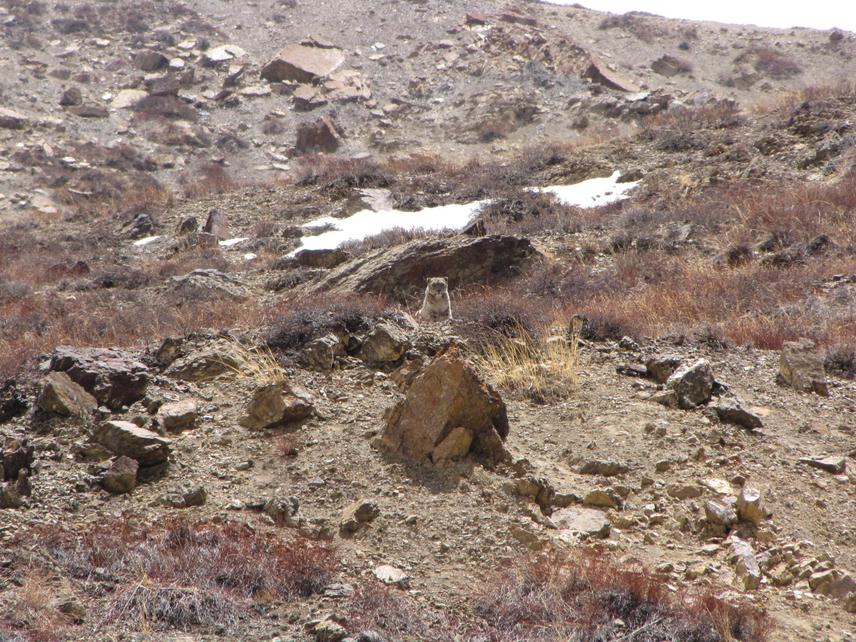Bishnu Prasad Devkota
Other projects
This project will assess people’s perception towards snow leopard conservation within the level of existing human-snow leopard conflict and also the change in their perception in reference to the existing conservation activities and policy being implemented.

Snow leopard sighted by Bishnu P Devkota, Nepal.
Snow leopard population is declining throughout its range due to various survival threats including habitat and prey loss, human snow leopard conflict. Different conservation activities have been carried out for the conservation of snow leopard, and it is yet to see how local people perceive its conservation, and how snow leopard conservation can contribute to their livelihood.
Livestock predation has been one of the major causes of conflict between wildlife and humans throughout Nepal. Conservation strategies such as the snow leopard survival strategy and the snow leopard conservation action plan for Nepal have emphasized the need to assess the extent of conflict between local communities and snow leopards in order to reduce the impact of the interaction. Snow leopards have been reported to kill livestock in most parts of their range but the extent of this predation and its impact on local herders is poorly understood.
This project will assess people’s perception towards snow leopard conservation to get better understanding how perception has changed over time. This will be conducted in all the snow leopard range protected areas of Nepal. This will on one hand evaluate the effectiveness of present conservation activities being implemented in the field, and on the other hand help to plan for the future how human- snow leopard conflict can be minimized. Compensation program such as livestock insurance scheme has been considered to be very effective in minimizing conflict with snow leopard, but its effectiveness has not been evaluated. This project will also study the effectiveness of such program. Livestock predation by snow leopard is the main reason of conflict in the Himalayas. This is more severe in the pasture where people depend to keep their livestock on poorly constructed corals. So, this project will also encourage local people to construct large and common predator proof corals in the pastures.